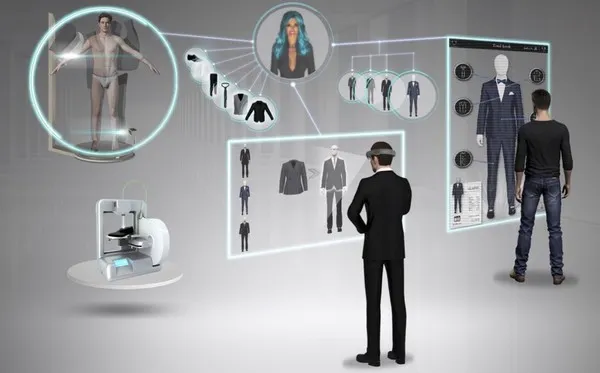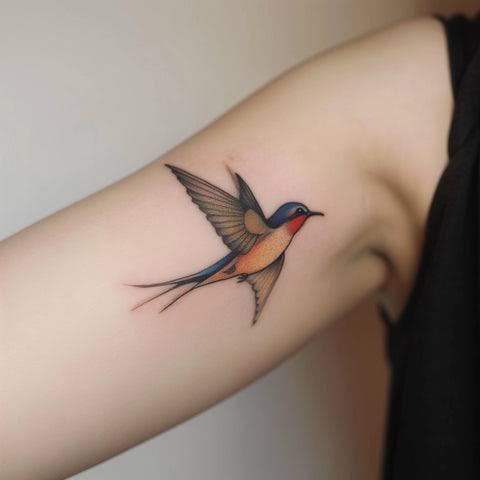How Tech is Influencing Fashion Trends
 The fashion industry stands as a remarkable testament to the profound impact of technology on cultural expression and consumer behavior. The fusion of technology and fashion has not only transformed traditional design paradigms but has also to redefine consumer interaction with brands. This blog post seeks to explore the dynamic intersection of these two realms, where digital innovations are reshaping fashion trends, from virtual runway presentations to the advent of wearable technology.
The fashion industry stands as a remarkable testament to the profound impact of technology on cultural expression and consumer behavior. The fusion of technology and fashion has not only transformed traditional design paradigms but has also to redefine consumer interaction with brands. This blog post seeks to explore the dynamic intersection of these two realms, where digital innovations are reshaping fashion trends, from virtual runway presentations to the advent of wearable technology.
The Evolution of Fashion Shows: From Physical to Digital
Traditionally, fashion shows have been the nerve center of the fashion world, where designers unveil their latest collections to a curated audience of buyers, celebrities, and industry influencers. However, the onset of the COVID-19 pandemic accelerated a shift that was already underway: the transition from physical to digital platforms. Many prominent fashion houses began experimenting with digital shows, utilizing live-streaming technology to reach broader audiences beyond the confines of exclusive venues.
Digital fashion weeks emerged as a response to physical limitations, allowing brands to unleash their creative potential without geographical constraints. For instance, the renowned international fashion week held in cities like New York, Paris, and Milan reimagined their presentations through innovative approaches, including 3D avatar models, animated designs, and immersive virtual reality experiences. These digital showcases not only enable greater accessibility for fashion enthusiasts worldwide but also empower designers to experiment with digital aesthetics, ultimately redefining notions of consumer engagement.
The Rise of Digital Fashion

An exciting offshoot of digital fashion shows is the advent of digital fashion itself. Designers have begun creating garments that exist purely in the digital realm, allowing consumers to “wear” these virtual clothes via social media profiles and online avatars. Platforms such as DressX and The Fabricant are pioneering this trend, offering consumers a chance to purchase and don stunning digital outfits without the environmental impact of traditional fashion manufacturing.
This development raises intriguing questions about identity and representation in the digital space. The ability to curate one’s online persona through virtual garments allows individuals to express themselves in ways they may not do in physical spaces. Furthermore, digital fashion opens a dialogue on sustainability, as it minimizes waste and resource consumption, a significant concern in an industry notorious for its ecological footprint.
Wearable Technology: A Fashion Frontier
Wearable technology represents another significant intersection between fashion and technology. The integration of smart devices into clothing and accessories reflects a growing consumer demand for functionality without compromising aesthetic appeal. From fitness trackers and smartwatches to clothing outfitted with biosensors, the landscape of wearable tech continues to expand.
One notable example is the collaboration between sportswear brands and technology companies, resulting in garments that monitor health metrics, such as heart rate and body temperature. Innovative textiles capable of regulating temperature, absorbing moisture, or even charging devices have emerged, pushing the boundaries of what clothing can achieve.
Moreover, wearable tech extends into the realm of high fashion. Luxury brands have begun to explore how innovative technologies can enhance the consumer experience. For instance, Ralph Lauren’s PoloTech Shirt integrates sensors to provide real-time feedback on athletic performance, marrying the protective edge of technology with the elegance synonymous with high-end fashion.
The Role of Data and Artificial Intelligence
As fashion brands become increasingly reliant on technology, data analytics and artificial intelligence (AI) are poised to revolutionize how trends are forecasted and consumer preferences are understood. Through advanced data collection and analysis, brands can gain valuable insights into consumer behaviors and preferences, enabling them to tailor their collections and marketing strategies accordingly.
AI algorithms are now capable of predicting emerging fashion trends based on social media activities, online searches, and influencer movements. Brands can leverage this data to produce designs that resonate with their target audiences, minimizing production waste and optimizing inventory management. Furthermore, chatbots and virtual shopping assistants enhance customer service by providing personalized recommendations based on individual preferences.
Sustainability Through Technology
Sustainability has become a paramount concern in fashion, and technology plays a crucial role in addressing this challenge. Innovations in textiles production, such as 3D printing and biomanufacturing, promote sustainable practices by reducing material waste and lowering carbon footprints. The development of eco-friendly fabrics sourced from recycled materials exemplifies how technology can metamorphose the traditional production model.
Moreover, blockchain technology is making waves in the fashion industry by enhancing transparency in supply chains. Consumers are increasingly demanding to know the origin of their garments, and blockchain facilitates traceability, ensuring ethical sourcing and fair labor practices. This transparency fosters trust between brands and consumers, promoting a culture of responsible consumption.
Conclusion: A Fashion Future Interwoven with Technology
As we continue to navigate the complexities of the modern world, the intersection of technology and fashion highlights a transformative journey that reverberates through culture and society. The evolution of fashion shows, the emergence of digital fashion, the rise of wearable technology, and the utilization of data and AI reflect a future that encourages creativity, sustainability, and inclusivity.
With technology shaping the contours of fashion, we are witnessing an era where boundaries are blurred, and possibilities are endless. As the fashion industry embraces the digital revolution, the synergy between these two powerful realms will undoubtedly lead to innovations and trends that continue to inspire and empower consumers for generations to come. Thus, the future of fashion is not just about what we wear but rather how we engage, express, and evolve in both physical and digital spheres.


